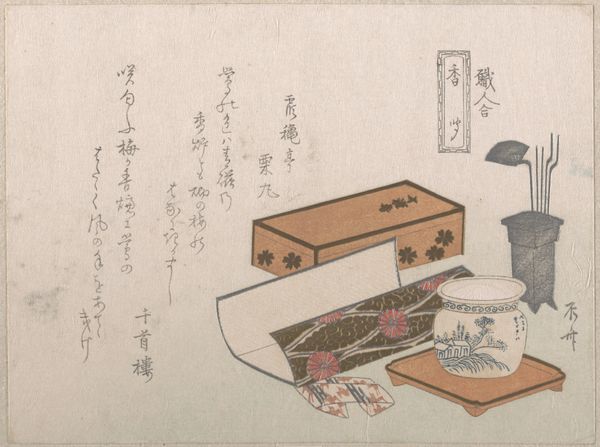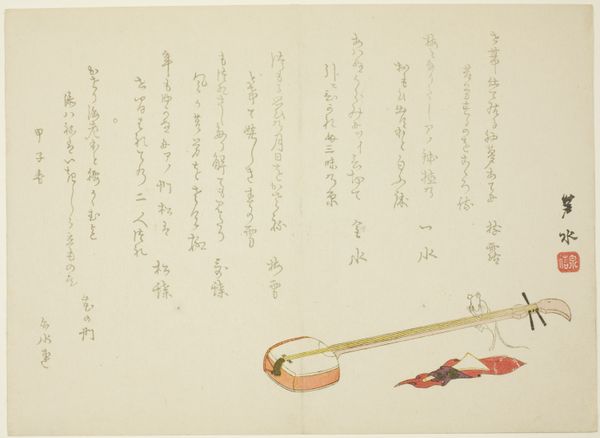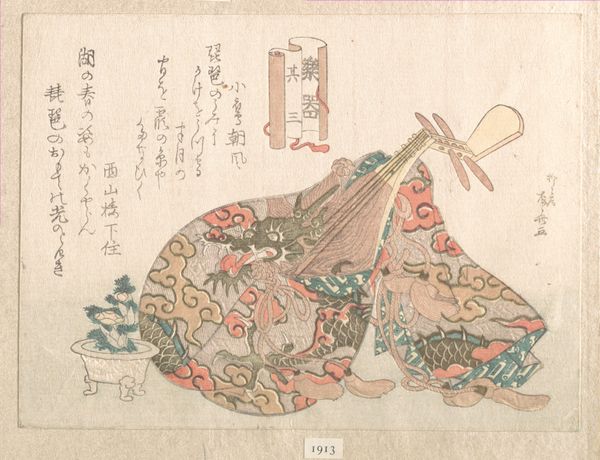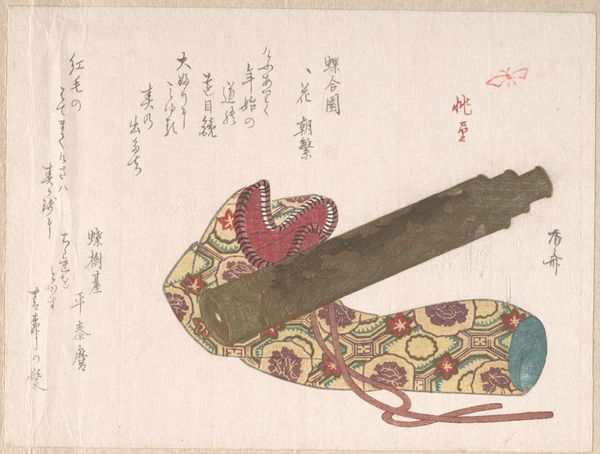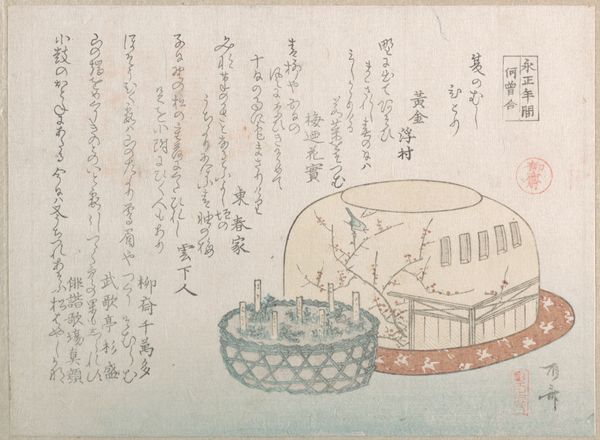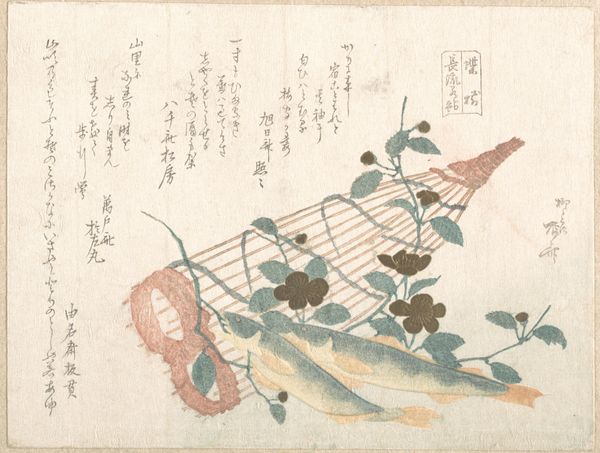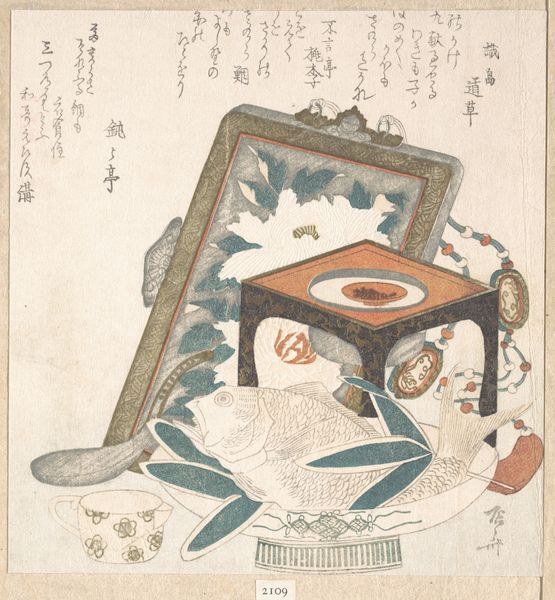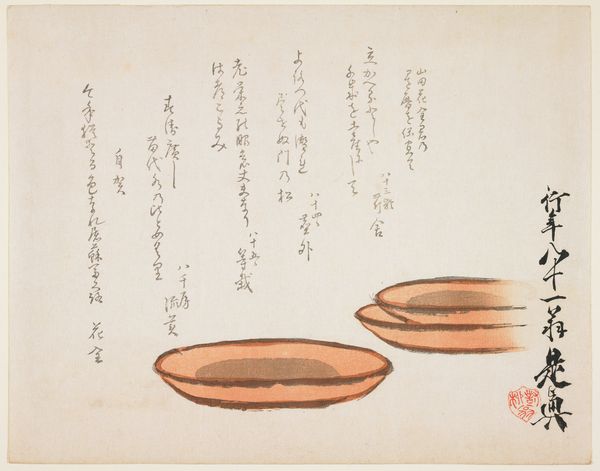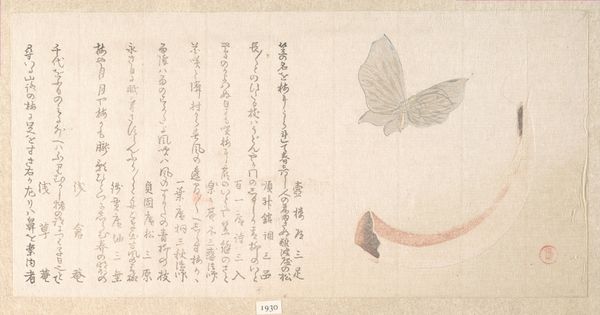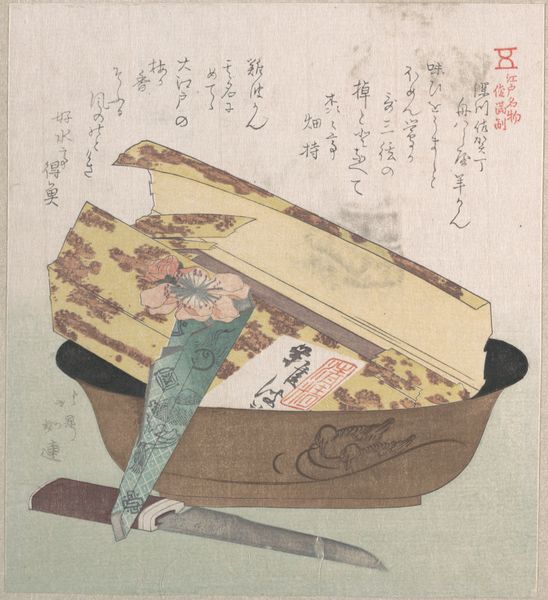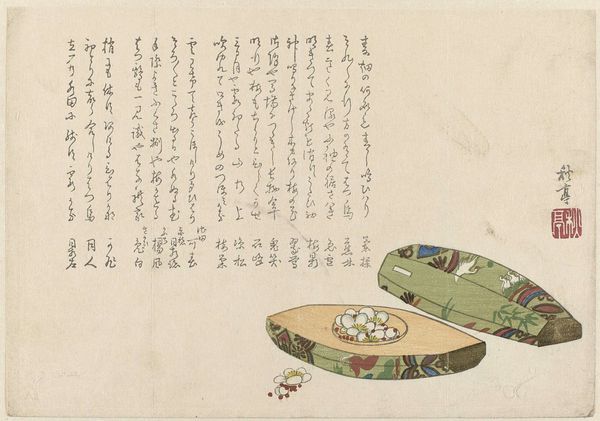
Shamisen, Plectrum and a Book 1756 - 1829
0:00
0:00
print, paper, ink, woodblock-print
#
blue ink drawing
# print
#
book
#
asian-art
#
sketch book
#
ukiyo-e
#
paper
#
ink
#
woodblock-print
#
line
#
musical-instrument
#
calligraphy
Dimensions: 4 3/16 x 6 1/4 in. (10.6 x 15.9 cm)
Copyright: Public Domain
Editor: So, this woodblock print is titled "Shamisen, Plectrum and a Book," created by Chōbunsai Eishi sometime between 1756 and 1829. The muted colors and simple lines give it such a calm, almost contemplative feel. What do you see in this piece? Curator: I see a powerful commentary on the social position of women in Edo-period Japan. Consider the shamisen, often associated with geishas and the entertainment districts. And the book – potentially suggestive of literacy and artistic cultivation, qualities expected of women in certain social strata. It hints at the complex expectations placed upon them: artistic accomplishments versus societal roles. Editor: Interesting! I was just thinking about the simple beauty of the composition, but your interpretation adds a whole new layer. So, are you suggesting that the artist might be making a statement about the lives of women through these objects? Curator: Precisely. The objects become symbols, reflecting a limited scope, even oppression, within a seemingly refined existence. Who has access to which forms of knowledge? How is that access governed by gender? It’s not just a still life; it’s a visual text ripe for critical reading through the lens of feminist theory. The gaze is decidedly Western, filtered through art-historical readings of social class. Editor: Wow, I'd never thought of it that way. I’ve definitely got a lot to learn. Curator: That's what makes art history so rewarding. Each piece offers us a chance to excavate hidden histories, challenge existing narratives, and consider diverse perspectives, using art as a launchpad to ignite these socio-political discussions. Editor: It's amazing how a simple image can reveal so much about history and culture. Thanks for opening my eyes to new ways of interpreting art!
Comments
No comments
Be the first to comment and join the conversation on the ultimate creative platform.
